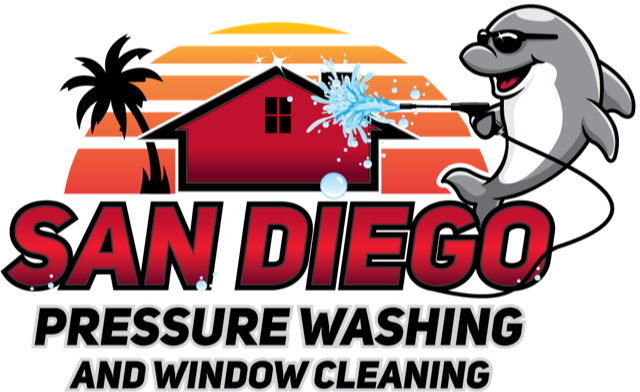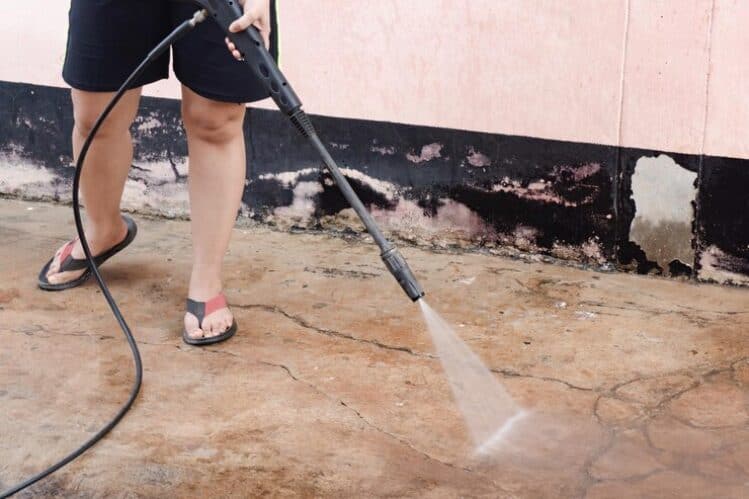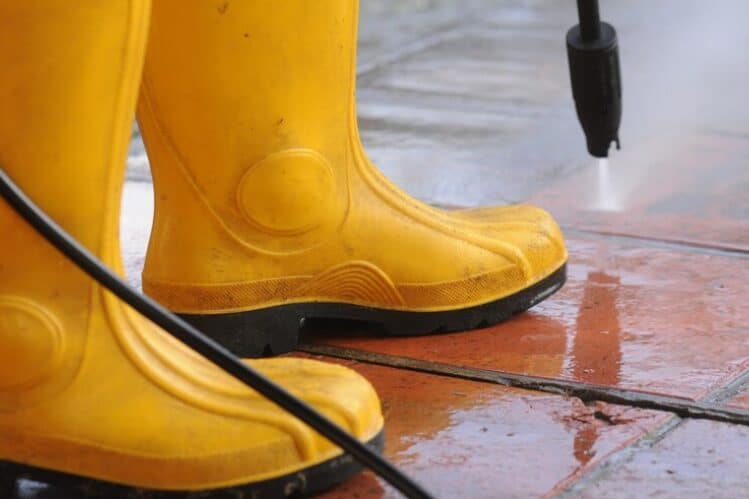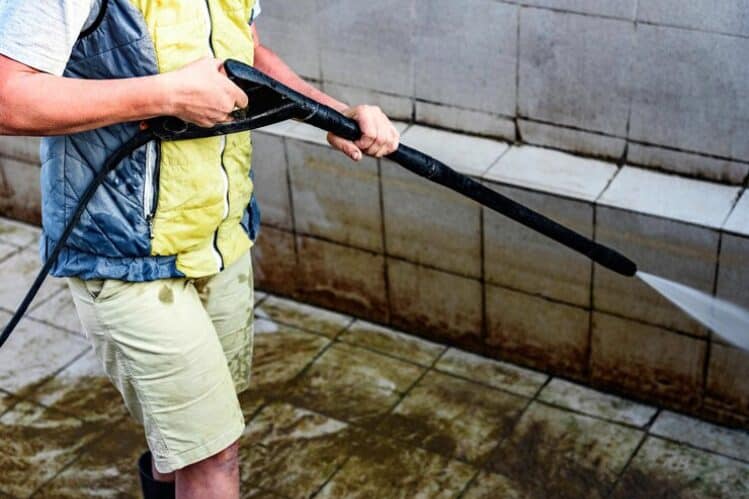Calcium deposits, commonly known as limescale, are a pesky problem that can mar the appearance of surfaces and reduce their longevity. These white, chalky stains often form on concrete, brick, and even metal surfaces exposed to hard water. While they may seem stubborn, the good news is that cleaning calcium buildup can be done using the right tools and techniques. This blog will shed light on how to remove calcium deposits using pressure washing, from understanding the problem to step-by-step solutions and preventive measures.
Takeaways
- Calcium deposits are stubborn white stains caused by hard water evaporation.
- Pressure washing is a Fast, eco-friendly, and highly effective method for limescale removal.
- To remove calcium build-up, assess, prep, apply solution, pressure wash, rinse, and repeat if needed.’
- Hard water, leaks, pool splash-outs, and rainwater runoff are some common causes of calcium deposits.
- To prevent calcium deposits, clean regularly and use water-repellent coatings.
Understanding Calcium Buildup
When hard water containing high levels of minerals evaporates, it leaves behind mineral deposits on surfaces called calcium buildup. And when these deposits accumulate over time, they turn into stubborn stains that you find challenging to remove. The severity of calcium buildup is determined by the mineral content of the water porosity of the surface and the frequency of the water exposure.
So, how to get rid of calcium buildup? Pressure washing is regarded as the most efficient and effective solution for the same. It uses high water pressure to eliminate dirt, dust, grime, and mineral deposits from surfaces and, hence, restore them to their original condition. It is an eco-friendly method of cleaning buildings, vehicles, and concrete surfaces.
Steps for Removing Calcium Buildup
Now that you know that pressure washing is the process of removing calcium buildup, you must be wondering about the steps involved in it. So, how to pressure wash a house to remove calcium buildup? Let’s find out.
Assess the Surface
Before actually executing the pressure washing process, first assess the surface having calcium buildup. Check the extent of the calcium buildup and see if there are any cracks or damage that can be affected by high-pressure cleaning. Delicate surfaces require special care.
Choose the Right Pressure Washer
Set the pressure washer to the appropriate settings to avoid any kind of pressure washer injury. Tougher deposits require higher pressures. But be careful while setting up the pressure washer at higher settings to avoid any kind of damage to the surface. Generally, most outdoor surfaces require pressure settings between 2000-3000 PSI. Choose lower pressure settings if the surface is delicate.
Prepare the Pressure Washer
Put the calcium deposit remover solution in the pressure washer. Set up the pressure washer by attaching the appropriate nozzle, such as a 25-degree or 40-degree tip, which provides a wider spray pattern and reduces the risk of surface damage. Make sure the water source is connected securely, and check the machine for any clogs or issues.
Test the Pressure
Before pressure washing the main surface, test it on a small inconspicuous area. See if it is perfect to apply and not damage the area, and adjust the settings as needed.
Apply the Solution
When you apply the solution to the affected areas, let it sit for 5-10 minutes. It will help to break down the calcium deposits. If the stains are stubborn, use a stiff brush to scrub the solution into the surface.
Pressure Wash the Surface
The next in the list of how to remove calcium deposits is turning on the pressure washer and cleaning the surface. Keep the nozzle at least 12 inches away to avoid damage. Use smooth, sweeping motions, and work in sections to ensure thorough cleaning.
Rinse Thoroughly
After pressure washing, rinse the surface with clean water to remove remaining residues and dislodged deposits. Cleaning remaining residues is important so that they do not attract new buildup.
Repeat if Necessary
Repeat the process for stubborn stains. This is done to ensure that the surface is completely clean.
Inspect and Protect
Once the surface is clean, inspect it for any remaining spots or damage. To prevent future calcium buildup, consider applying a sealant or water-repellent coating, especially on porous surfaces like concrete or brick. Regular maintenance can help keep your surfaces looking pristine.
The Causes of Calcium Deposits
Common culprits of calcium deposits are –
- Hard water with high levels of dissolved minerals.
- When hard water evaporates, it leaves behind calcium carbonate, forming deposits over time.
- Persistent leaks or drips can lead to localized buildup.
- Chlorinated water or splash-outs from pools can contribute to calcium stains.
- In areas with high mineral content in rainwater, runoff can cause buildup on surfaces.
Get in Touch With the San Diego Pressure Washing
How to clean calcium buildup is a time-consuming and labor-intensive process, but it doesn’t have to be. Professional pressure washing services like San Diego Pressure Washing can save you the hassle and ensure your surfaces are restored to their original beauty. Whether it’s your driveway, patio, or pool deck, their team of experts has the tools and knowledge to clean calcium buildup, even the toughest stains.
Our experts provide services that not only remove calcium deposits but also extend the lifespan of your surfaces and enhance your property’s curb appeal. Visit us to know more about the pressure cleaning cost in San Diego and our services.
Conclusion
Calcium deposits can diminish the beauty and functionality of your outdoor spaces, but with the right approach and tools, they are manageable. Pressure washing, when done correctly, is an efficient way to remove these stubborn stains and restore surfaces to their original condition.
When the task feels overwhelming, San Diego Pressure Washing is here to help. Don’t let calcium deposits ruin the look of your outdoor areas. Contact San Diego Pressure Washing today to know about the locations we serve in and enjoy a spotless and polished space.
Frequently Asked Questions
What does vinegar do to calcium deposits?
Vinegar is an acidic solution that helps break down and dissolve calcium deposits, also known as lime scale. It reacts with the alkaline calcium, helping to soften and loosen the buildup for easier removal.
Can you pressure wash calcium deposits off pool tile?
Yes, you can use a pressure washer to remove calcium deposits from pool tiles, but it’s important to use the correct nozzle and pressure setting to avoid damaging the tile surface. Sometimes, a combination of pressure washing and chemical cleaners may be needed for tough deposits.
How long does it take to recover from calcium deposit removal?
The recovery time for calcium deposit removal depends on the method used. If done professionally, recovery is usually immediate, with the tiles looking cleaner right away. If it’s a DIY process with chemical treatments, it may take a few hours for the cleaner to dissolve the deposits, followed by scrubbing and rinsing.



